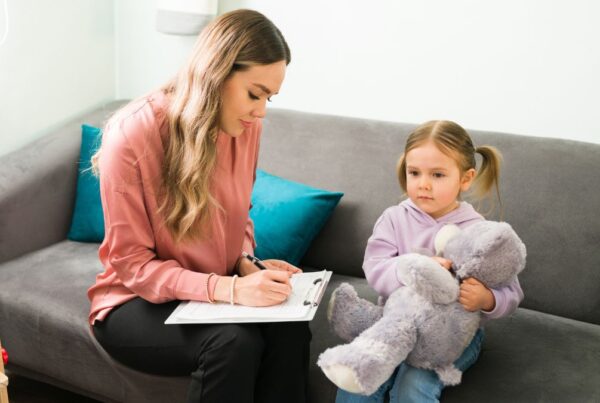Burnout doesn’t always look like someone collapsing from exhaustion. In behavioral health—especially in Applied Behavior Analysis (ABA)—it can show up quietly: emotional detachment, chronic fatigue, and feeling ineffective, even when outcomes are solid. It builds when clinicians carry intense caseloads, juggle paperwork, and take on the emotional toll of working with families navigating challenging behaviors.
And here’s the hard part: when clinicians are burnt out, it affects everything—how they show up for their clients, their ability to remain objective, and their capacity to stay in the field long term. But burnout isn’t inevitable. With the right structures in place, it’s something we can prevent and manage.
Let’s dig into how that works—and how providers in Maryland are stepping up to make this a reality.
Understanding the Scope of Burnout in ABA and Behavioral Health
Burnout in behavioral health is multi-layered. It’s not just about fatigue—it’s emotional strain from working with vulnerable populations, systemic challenges, and high turnover. For BCBAs, RBTs, and other ABA clinicians, burnout often stems from:
- High caseloads with limited planning time
- Pressure to produce fast results
- Emotional labor of supporting families under stress
- Limited support for self-regulation and boundaries
- Inadequate peer mentorship or supervision
In states like Maryland, where demand for ABA services is rising, the pressure can feel intense. Many providers struggle to find enough staff, which means existing team members are asked to do more, with less. It’s a recipe for emotional exhaustion, especially when new clinicians don’t feel equipped to manage complex behaviors or family dynamics.
If we want to keep clinicians in the field—and keep the quality of care high—we need to look at prevention, not just treatment of burnout.
 Signs That a Clinician May Be Burning Out
Signs That a Clinician May Be Burning Out
Before we can support our team, we need to recognize when burnout is creeping in. Here’s what it might look like:
1. Emotional Exhaustion
Clinicians may feel drained before the day even starts. Emotional labor—especially in homes with high-stress dynamics—takes a toll. This isn’t about laziness or lack of motivation. It’s about being emotionally spent, even when the job matters deeply.
2. Depersonalization
This shows up as distancing from clients or becoming emotionally numb. Some might start referring to kids by their case numbers or data instead of their names. It’s often a defense mechanism—when empathy feels too heavy, detachment feels safer.
3. Reduced Sense of Accomplishment
Even with positive data, clinicians may feel they’re not making a difference. Progress may start to feel transactional instead of rewarding.
4. Increased Irritability or Withdrawal
A clinician who once thrived in collaboration may become reactive or isolated. They may start declining peer support or avoid supervision.
5. Physical Symptoms
Chronic headaches, sleep disruption, and even gastrointestinal issues can stem from prolonged stress.
Recognizing these signs early is critical—because by the time someone considers quitting, they’ve often been struggling in silence for months.
 How to Prevent and Reduce Burnout in ABA: 5 Key Areas of Support
How to Prevent and Reduce Burnout in ABA: 5 Key Areas of Support
Burnout doesn’t get solved with yoga mats and pizza Fridays. While those things can help morale, they don’t get to the root of the issue. Prevention and support have to be structural, not just symbolic.
Below are five crucial areas where ABA organizations can (and should) invest to protect their teams:
1. Reasonable Caseloads and Protected Admin Time
Clinicians need breathing room. That means ensuring caseloads align with experience level and offering protected time for planning, documentation, and debriefing. Too often, BCBAs are expected to supervise 15+ clients while writing treatment plans and training RBTs. That’s not sustainable—and it increases error rates.
2. Regular, Meaningful Supervision
Supervision isn’t just about compliance. It’s about growth, emotional support, and problem-solving. It should be frequent, collaborative, and allow space for clinicians to talk through complex cases—not just review graphs. Especially for new BCBAs, mentorship and modeling are vital. Burnout decreases when clinicians feel guided, not left to sink or swim.
3. Training on Emotional Resilience and Boundary Setting
We train our staff to collect data and implement behavior plans, but what about managing caregiver grief or setting boundaries with clients who message them outside work hours? Workshops on emotional resilience, values-based work, and self-regulation can make a difference. Even simple language scripts for setting boundaries go a long way.
4. Peer Support Networks
ABA can feel isolating, especially for in-home providers. Establishing intentional peer networks—case study groups, open consult hours, or clinical chat threads—gives clinicians space to connect with others who get it. This isn’t just social—it’s protective. Research shows that feeling part of a professional community reduces burnout.
5. Real Opportunities for Growth and Role Diversification
If clinicians can’t see a future in their role, they’ll start looking elsewhere. Offering pathways into clinical leadership, training, research, or family liaison roles keeps people engaged. Even micro-promotions or internal fellowships help clinicians feel seen and valued.
When these five supports are integrated into company culture—not just offered as perks—burnout becomes less likely. Clinicians feel empowered instead of overwhelmed.
Building a Supportive Environment: What Makes a Difference for ABA Teams
Not all support is created equal. It’s not about checking a box—it’s about creating a culture where clinicians feel safe, seen, and supported. Here’s how that translates on the ground:
- Weekly check-ins that prioritize clinician well-being, not just client outcomes
- Workflows that prevent RBTs from being scheduled back-to-back with no time for notes or breaks
- Access to mental health resources, including optional debriefing after challenging sessions
- Open communication between clinicians and leadership about needs, feedback, and policy changes
- Celebrating not just big client wins, but clinician milestones (like mastering a skill or de-escalating a tough session)
Behavioral health is intense, but it doesn’t have to be draining. When organizations prioritize their staff, everyone benefits—especially the families receiving care.
 The Role of Families in Clinician Well-being
The Role of Families in Clinician Well-being
Families may not always realize it, but they’re part of the equation too. A collaborative relationship between families and providers goes a long way.
Here’s how families can support ABA teams:
- Respect boundaries: Clinicians need time off. Avoid texting or calling after sessions unless it’s an emergency.
- Celebrate progress: Take time to acknowledge not just your child’s growth, but the clinician’s work in making that happen.
- Communicate openly: If something feels off or unclear, bring it up respectfully. Transparency prevents stress on both sides.
- Be patient with staff transitions: Burnout often causes turnover. If a clinician leaves, it’s not always a reflection on your family—it might be about their overall workload.
When families and clinicians work as a team, outcomes improve—and burnout decreases.
Final Thoughts: Sustainable ABA Starts with Clinician Support
If we want to see meaningful, long-term progress in the children we serve, we need to make sure the people delivering that care are thriving. Burnout in ABA isn’t just a personal issue—it’s a systems issue.
By shifting the focus from short-term productivity to long-term sustainability, we ensure that the field stays strong—and that the children who rely on us continue receiving high-quality, consistent care.
At Crown ABA, we believe that care for our clinicians is care for your child. That’s why we emphasize supervision, teamwork, and a supportive work culture—so your family gets consistent, attentive care rooted in long-term relationships.
If you’re searching for ABA therapy in Maryland, we’re here to support your child’s growth through collaborative, evidence-based care—delivered by clinicians who feel confident, prepared, and supported every step of the way.
Ready to get started? Reach out today to learn more about how we can support your journey.





